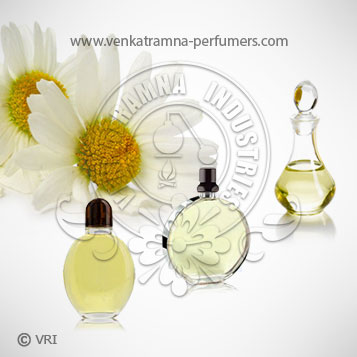
| Botanical Name | Chamaemelum nobile |
| Common Name | English chamomile, garden chamomile, sweet chamomile. |
| Country of Origin | India |
| Solubility | Insoluble in water, soluble in alcohol and oils |
| Specific Gravity | 0.8758 @ 72°F |
| Optical Rotation | -0.56 |
| Refrective Index | 1.4591 @ 72°F |
| PlantPart | Flowers |
| Bland With | bergamot, lavender, geranium, clary sage, jasmine, grapefruit, rose, tea tree, lemon and ylang-ylang |
| CAS No | 8015-92-7 |
| Flash Point | Above 200 °C |
| Extraction Method | Steam Distilled |
Chamomile is a plant that has been used since ancient Egypt in a variety of healing applications. Chamomile is a native of the Old World; it is related to the daisy family, having strongly scented foliage and flowers with white petals and yellow centers. The name chamomile is derived from two Greek words that mean “ground” and “apple,” because chamomile leaves smell somewhat like apples, and because the plant grows close to the ground. There are two varieties of chamomile commonly used in herbal preparations for internal use and for aromatherapy. One is called Roman chamomile (Anthemis nobilis), with contemporary sources in Belgium and southern England. Roman chamomile grows to a height of 9 in (23 cm) or less, and is frequently used as a ground cover along garden paths because of its pleasant apple scent.
Chamomile is an annual native of Europe and Western Asia, growing from one to two feet high. The word Chamomile is derived from Greek roots, -chamos and melos or Ground Apple, referring to the fact that the plant grows low to the ground, and the fresh blooms have a pleasing apple-scent. Over the centuries, Chamomile gained a reputation as an herb of many uses. It is said to have been one of the herbs of choice of Asclepiades, a physician who lived in Bithynia around 90 BCE. Pliny the Elder, one of the most famous of Roman naturalists who wrote extensively on herb use, is said to have given over his medical care to Asclepiades because he was very skilful in prescribing herbs.
Color : Pale blue greenish, clear liquid @22C with Sweet Herbal Green Woody odor,
Aroma : Organic Chamomile Essential Oil has an intensely sweet, herbaceous-like scent with a fresh-fruity undertone.
Esters of angelic acid (2-methyl-2(Z)-butenoate) and tiglic acid (2-methyl-2(E)-butenoate), a-pinene, b-pinene, camphene, sabinene, myrcene, y-terpinene, 1,8-cineole, caryophyllene, propyl angelate & butyl angelate.
Roman chamomile oil is used for getting relief from PMS as well as ailments like abdominal pain, throat infections and gall bladder problems. It also helps to relieve allergies, hay fever & asthma. For skin applications, it is used to calm acne, rashes, eczema, wounds, dry and itchy skin, dermatitis and other allergic conditions in general. Chamomile has been used internally for a wide variety of complaints. The traditional description of chamomile is alles zutraut, which means that the plant “is good for everything.” Chamomile Essential Oil in Pharma Chamomile has been used for the following purposes, in pharmaceutical and ayurvedic industries to treat the following medical conditions: Antispasmodic: A preparation given to relieve intestinal cramping and relax the smooth muscles of the internal organs. Chamomile is used as an antispasmodic to relieve digestive disorders, menstrual cramps, premenstrual syndrome (PMS), headache, and other stress-related disorders. Anthelminthic: Chamomile has been used to expel parasitic worms from the digestive tract. Carminative: Chamomile is given to help expel gas from the intestines. Sedative: Perhaps the most frequent internal use of chamomile is in teas prepared to relieve anxiety and insomnia. Anti-inflammatory: Roman chamomile has been used to soothe the discomfort of gingivitis (inflamed gums), earache, and arthritis. German chamomile is used in Europe to treat oral mucosities in cancer patients following chemotherapy treatment. Antiseptic: Chamomile has mild antibacterial properties and is sometimes used as a mouthwash or eyewash. It can be applied to compresses to treat bruises or small cuts. Essence of Chamomile Essential Oil The external uses of chamomile include blending its essential oil with lavender or rose for scenting perfumes, candles, creams, or other aromatherapy products intended to calm or relax the user. Chamomile is considered a middle note in perfumery, which means that its scent lasts somewhat longer than those of top notes but is less long lasting than scents extracted from resinous or gum-bearing plants. Chamomile is also a popular ingredient in shampoos, rinses, and similar products to add highlights to blonde or light brown hair.